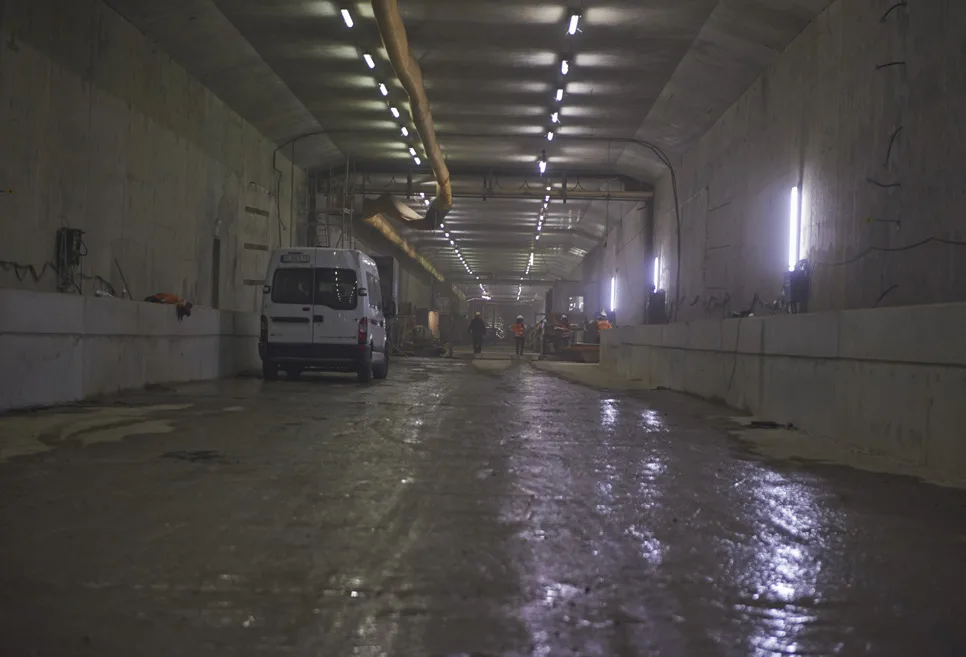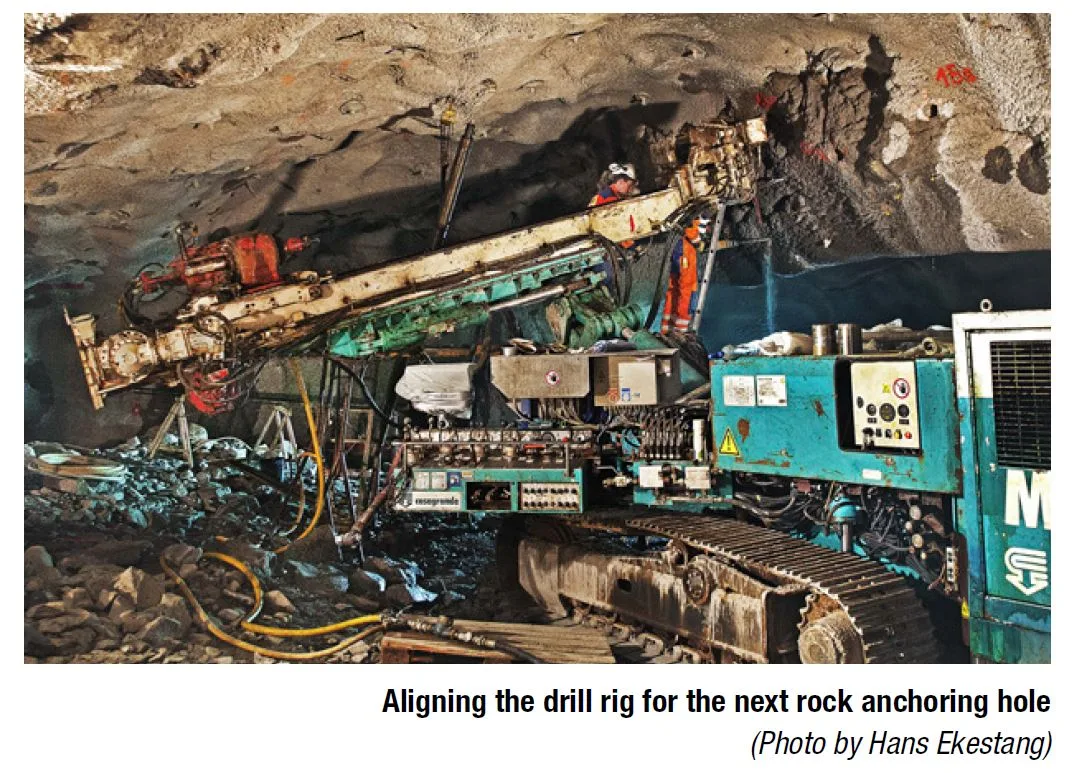Tunneling
The City Line railway project builds a six km long commuter train tunnel under the central parts of Stockholm, Sweden
Stockholm, Sweden
Züblin Spezialtiefbau
W100 & W150 Hammers

The City Line railway project builds a six km long commuter train tunnel under the central parts of Stockholm, Sweden. The tunnel will be built in bedrock. At one part it will be immersed.
The water-powered drilling technology was chosen as it is the faster alternative and gives a borehole surface that is optimal for the following grout process. It is also able to meet all environmental and accuracy demands.
A complex construction project
Plans for the City Line railway project in Stockholm, Sweden, has been developing since 1980. The Swedish Transport Administration, Trafikverket, kicked off the project in 2006 with environmental friendliness as a top priority. A six km long commuter tunnel will go under the central parts of Stockholm. When the project is completed in 2017, the track capacity in Stockholm will be doubled.
The anchoring
The Southern end of the tunnel connects to Söder Mälarstrand and will be secured to the rock by a total of 69 anchors, each containing 19 strands, Ø 16 mm wide. 44 rock anchors are located in longitudinal direction of the tunnel and distributed conical around the cross section.
These rock anchors overlap in the concrete structure with post-tensioning tendons that continues through all three immersed tunnel elements. The other 25 anchors are installed perpendicular to the tunnel axis to transfer high transverse forces into the rock in accidental load case of ship impact.
Each anchor cable will be tensioned to about 300 tons, whereas the maximum allowed anchor load is around 400 tons.
In the Northern end, the tunnel will be able to vary a little in length as the water temperature shifts between winter and summer. A giant rubber gasket will keep it sealed.
Drilling for the anchors
Several factors made the drilling for the anchoring cables particular. The number of holes and the angle of each hole has been calculated to give optimal strength to the installation. Allowed borehole deviation was only 2%. On top of this, the drilling technology needed to be as environmental friendly as possible.
The drilling was performed in three steps:
1. The first eight meters of each borehole was drilled with rotary drilling and a bit size of Ø 116 mm.
2. The water-powered DTH drilling then continued with a bit size of Ø 115 mm for the remains of the hole length. After this, the hole was grouted to seal off any water leakage.
3. Finally, the borehole was reamed with water-powered drilling and a Ø 165 mm reaming bit.
The water-powered drilling gave both high accuracy, high penetration speed and optimal borehole surface.
| DTH Hammer | W100 & W150 Hammer |
| Drill bit | Ø 115 mm & Ø 165 mm |
| Drilling fluid | Clean water |
| Drill tube | Duplex drill tube, 114 mm |
| Rig | Casagrande M9 |
| Pump | Electric pump |
| Borehole length | 20 – 42 meters |
| Scope of drilling | 1 960 meters |
| Geologic formation | Gneiss and pegmatite |

See our featured Case studies below to learn what real world Tunneling-projects our technology as been a part of.